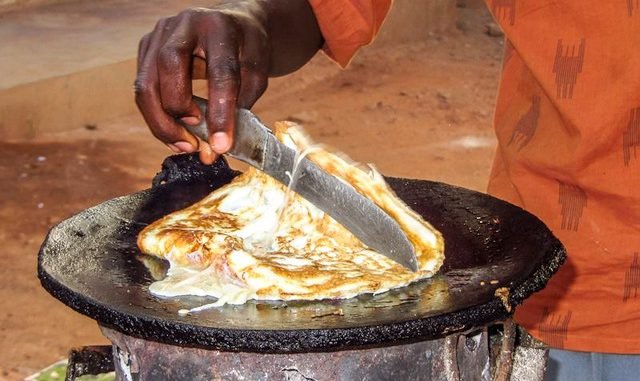
Kampala, Uganda | By Michael Wandati | Ugandan cuisine consists of traditional and modern cooking styles, practices, foods and dishes with English, Arab, and Asian (especially Indian) influences.
Rolex and Kikomando meals are seemingly “cuisines” that has become a big part of many urban dwellers.
These two meals is without shame shared by both the rich and poor alike. They are saviour meals for many University students, bachelors, ghetto dwellers and street children on the Kampala streets.
Some cafes and restaurants in Kampala have started touting a super Rolex that includes shredded cabbage, tomatoes, green pepper, cilantro, chilies, minced meat or shredded chicken and home fried potatoes. Filling and substantial, it does not come cheap on the plate.
Renowned areas for the trade in Kikomando and Rolex are Wandegeya, Nakulabye and Kabalagala. Other areas in the city, the business is rapidly catching up.
The Rolex
Not to be mistaken for the Swiss luxury watch – few Ugandans wear one – the Rolex is one of Uganda’s most pervasive street foods, found on almost every corner throughout Kampala.
Street vendors start with a chapati, a simple ball of dough stretched into a circular disk which is then submerged into a pan of hot oil, till it’s cooked thoroughly.
The vendor then cracks one or two eggs into a small cup mixing with salt, thin slivers of cabbage, and tomato. With a hefty portion of oil the egg meets the pan and bubbles and fries until it is scooped up and placed on the chapati. Rolling the whole thing up like a burrito, the Rolex is greasy, healthy, and delicious.
The Rolex usually costs Shs.1,500 for two eggs and one chapati.
Kikomando
Kikomando is a colloquial word usually used locally to refer to scenes in an action packed movie ‘COMMANDO’ starring Arnold Schwarzenegger. This word has become popular with many a labour worker and boda boda riders alike in reference to a combo meal.
Literally, it’s not an action movie as the name may suggest, but after you have eaten it, the satisfaction you get is equal to none.

Kikomando is a combination of chapati and beans. A Chapati is cut into small pieces and served with fried beans.
Kikomando was coined by self-proclaimed Ghetto president musician Bobi Wine who sang about the mixture of chapattis and beans in one of his songs. Later on, many people adopted the name which became popular especially in Kamokya.
Read Also: RECIPE: Chicken Luwombo – Ugandan traditional delicacy
A Kikomando meal of two chapattis and beans costs between Shs. 1,000 – Shs. 1,200.
No great culinary skills are required for one to learn how to make chapattis for Rolex and Kikomando. This is the sort of cooking that one invariably learns on the job and fortunately does not have any requisite skill from a culinary school.
Chapattis are common and for a minimal investment of rent, a sigiri (charcoal stove), griddle and some charcoal, flour, water and salt the rest is easy. Offhand, with a startup capital of roughly Shs. 50,000, many youth find it a good way to manage to make ends meet during these trying times.



